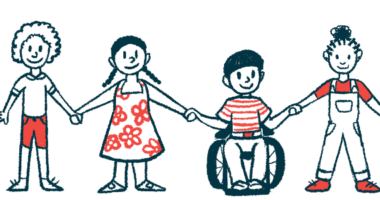Pain interferes with walking in children with hEDS/HSD: Study
Walking assessments may yield better strategies for rehabilitation

Children with hypermobile Ehlers-Danlos syndrome (hEDS) and hypermobility spectrum disorder (HSD) who are in pain or anticipating pain show certain walking patterns, leading researchers to believe walking assessments may help to better understand clinical characteristics of the conditions and to develop coping strategies.
Compared with typically developing children, those with hEDS or HSD spend more time with their feet on the ground while walking, and their gaits varied more. Pain, particularly lower extremity pain, is a common complaint in hEDS.
People with hEDS, the most common type of Ehlers-Danlos syndrome, also tend to have overly mobile joints, frequent joint dislocations, soft and fragile skin, and spinal deformities (scoliosis). When symptoms overlap, HSD is diagnosed when hEDS has been ruled out.
“This work may elucidate pain-related gait changes in this population, and lead to better strategies for optimizing physical therapy and rehabilitation,” researchers wrote.
The study, “The association of pain with gait spatiotemporal parameters in children with hypermobile Ehlers-Danlos syndrome and hypermobility spectrum disorder,” was published in Gait & Posture.
Joint and muscle pain can interfere with motor control, affecting gait and increasing the risk of falls. Clumsiness and falling, which are common with HSD/hEDS, can interfere with physical activity, disrupting and harming quality of life. Gait variability is an indication of increased fall risk.
Study investigates pain-gait link
The Wisconsin-based researchers wanted to study the relationship between pain and gait characteristics such as speed, step width, and stride length in children with hEDS or HSD. The study was reportedly the first of its kind.
They recruited 18 children, from 8 to 17 years old, with HSD or hEDS, along with 18 typically developing children, who served as a control group. Both groups had similar gender distribution, age, height, weight, and body mass index (a measure of body fat). All children underwent a gait analysis, involving walking at a self-selected speed down a 10-meter walkway at least 10 times.
The children with HSD or hEDS had longer stance times, meaning their feet were in contact with the ground longer during a step cycle, than the children in the control group. “We believe that increased percent stance time may be a result of gait adaptations due to pain to reduce gait instability to prevent falls,” the researchers wrote.
Other gait parameters, including stride length, stride time, gait speed, and step width, did not significantly differ between the two groups.
Pain, gait vary with activity
The researchers also interviewed the children and gave them questionnaires related to pain interference and pain catastrophizing, or experiencing negative emotions or expectations about pain. The children with HSD or hEDS generally reported mild current pain levels and moderate pain-related catastrophic thinking. They reported mild pain interference related to general activities, mood, mobility, going to school, relations with others, and enjoyment of life, and moderate pain interference during sleep.
Current pain levels did not correlate with any aspects of gait, but those who reported less pain interference in relationships with others tended to have faster gaits.
Various pain factors did correlate with greater gait variability, which is linked to an increased risk of falls in older adults. Specifically, greater pain interference related to mobility and going to school was associated with higher variability in stride length. Pain interference with life enjoyment was associated with greater variability in stance time. In addition, a greater degree of pain catastrophizing was significantly linked to less variability in step width, or the distance between the two heels during a step.
“Despite the relatively small number of children, this study nevertheless identified significant correlations,” the researchers wrote. “A larger number of pediatric population in future studies may help to reveal other trends, relationships, and allow for subgroup analysis to identify high-risk groups that might benefit from more intensive early intervention.”
Future studies should also include children along a wider spectrum of pain, as the current study generally involved patients with only mild pain intensity, the team noted.







